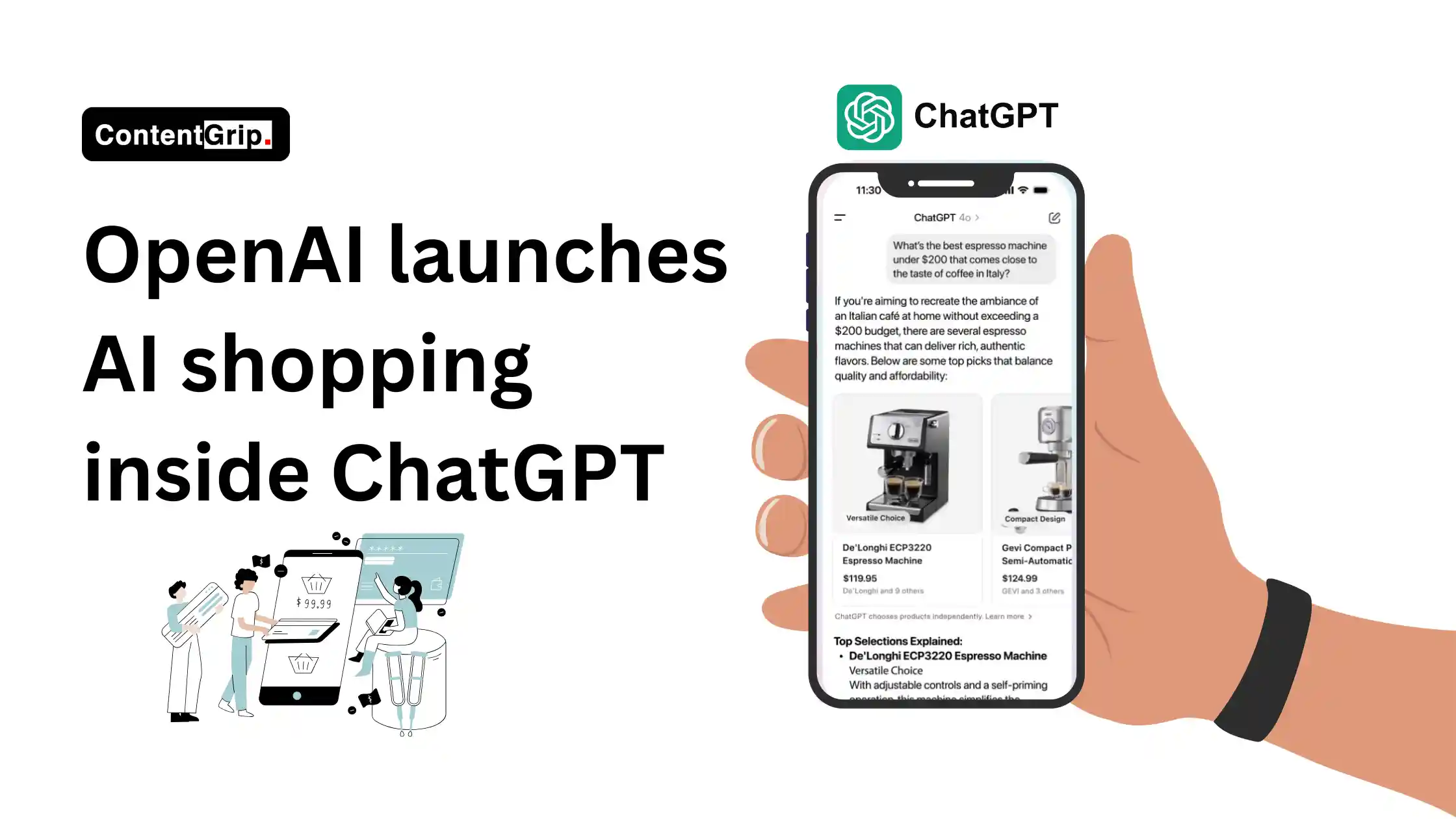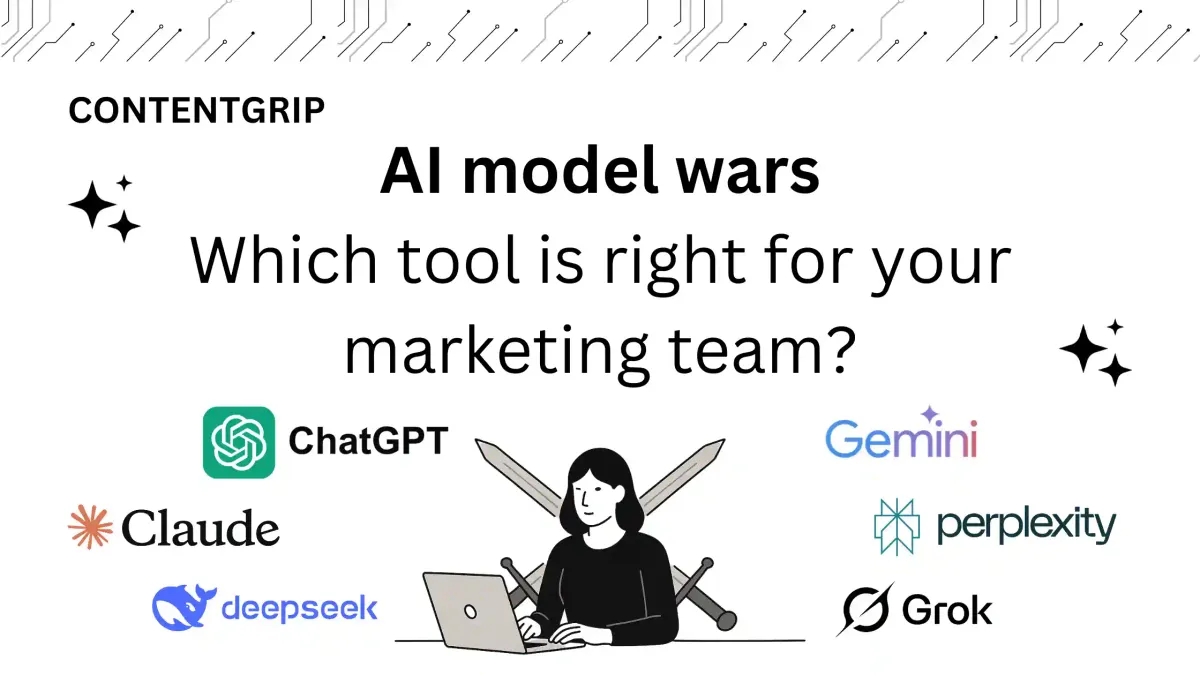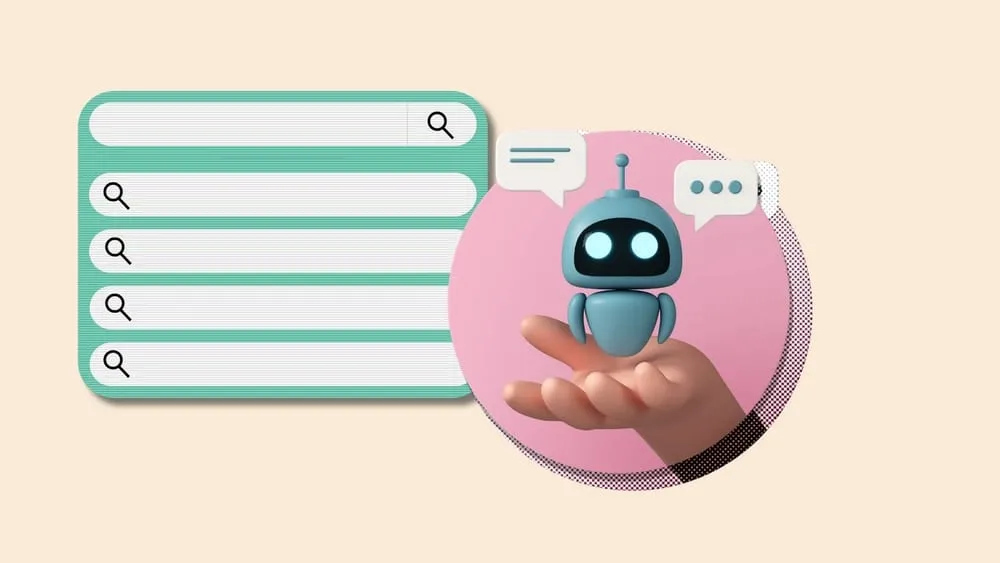OpenAI launches AI shopping inside ChatGPT: what marketers should know
OpenAI introduces shoppable links and product comparisons to ChatGPT—what this means for brands and marketers.

Ecommerce isn't just for Amazon anymore. OpenAI just rolled out a major upgrade to ChatGPT: users can now search for products, compare prices and reviews, and click on shoppable links—all without leaving the chat window.
This move signals OpenAI's deeper push into ecommerce and digital advertising, posing potential new challenges for traditional search engines and online retailers.
As marketers, it’s worth asking: are your digital strategies ready for an AI-native shopping experience?
This article explores what OpenAI’s ChatGPT shopping feature is, why it matters for brands, and how marketers should think about adapting to yet another platform shift.

What happened: OpenAI introduces AI-driven shopping
OpenAI is launching a new shopping feature inside ChatGPT, available to Plus, Pro, and Free users. The tool lets users find, compare, and buy products directly from their chat sessions. Results come with visual details, pricing, reviews, and direct links to retailers like Walmart.
Shopping
— OpenAI (@OpenAI) April 28, 2025
We’re experimenting with making shopping simpler and faster to find, compare, and buy products in ChatGPT.
✅ Improved product results
✅ Visual product details, pricing, and reviews
✅ Direct links to buy
Product results are chosen independently and are not ads.… pic.twitter.com/PkZwsTxJUj
Importantly, OpenAI claims these product results are independently chosen and not paid ads—at least for now.
The launch comes as OpenAI reports that search is one of ChatGPT’s fastest-growing use cases, generating over one billion web searches in the past week alone.
Context: OpenAI vs. Perplexity, Amazon, and Google
OpenAI isn't entering a vacuum. This move pits ChatGPT squarely against competitors like Perplexity, which launched its own shopping capabilities last year, as well as ecommerce juggernauts like Amazon and search leaders like Google.
The expansion into shopping—and possibly advertising—aligns with OpenAI’s shift toward a for-profit model. The company, now valued at around US$300 billion, has been quietly hiring top ad executives like former Coinbase CMO Kate Rouch to build out new revenue streams.
As Debra Aho Williamson of Sonata Insights put it, "We’ve seen this playbook before, including with Google and Facebook, where brands first made their organic presence and then the platforms turned towards advertising."
Translation? Today's independent product results could turn into tomorrow’s ad inventory.

What marketers should know
OpenAI’s new feature might seem like a futuristic experiment—but it could signal massive shifts in how brands reach audiences and drive sales. Here's what you need to consider:
1. Prepare for AI-driven shopping behaviors
If users start treating ChatGPT as a shopping assistant the way they use Google Search or Amazon, brands will need to optimize for AI surfacing, not just SEO. Understanding how OpenAI curates and ranks products will become a new discipline.
2. Expect organic reach battles... then pay-to-play
OpenAI says the shopping links aren’t ads—yet. But if history with Google and Meta is any guide, we can expect monetization sooner rather than later. Brands that invest early in AI-native commerce strategies may win the organic visibility race before competition heats up.
3. Rethink your ecommerce presence beyond marketplaces
Traditional ecommerce strategies often prioritize Amazon listings and Google Shopping ads. With ChatGPT entering the mix, brands may need to consider direct partnerships with OpenAI-supported retailers or rethink how product data is shared across AI ecosystems.
4. Watch for new advertising models
If ChatGPT shopping eventually opens up paid placements, marketers will face a new kind of ad channel—one likely driven by conversational context rather than just keyword targeting. Getting ahead on conversational commerce tactics will be critical.
OpenAI’s shopping feature inside ChatGPT may seem small today, but it hints at a much bigger future: AI-driven commerce where discovery happens through conversation, not clicks.
For marketers, the message is clear: prepare for AI to become a shopping destination.
Flexibility, early experimentation, and cross-platform strategies will be key to staying competitive as the ecommerce landscape shifts once again.





